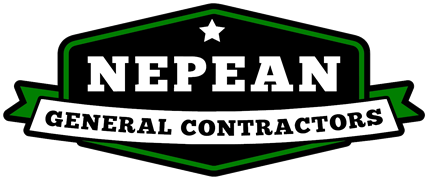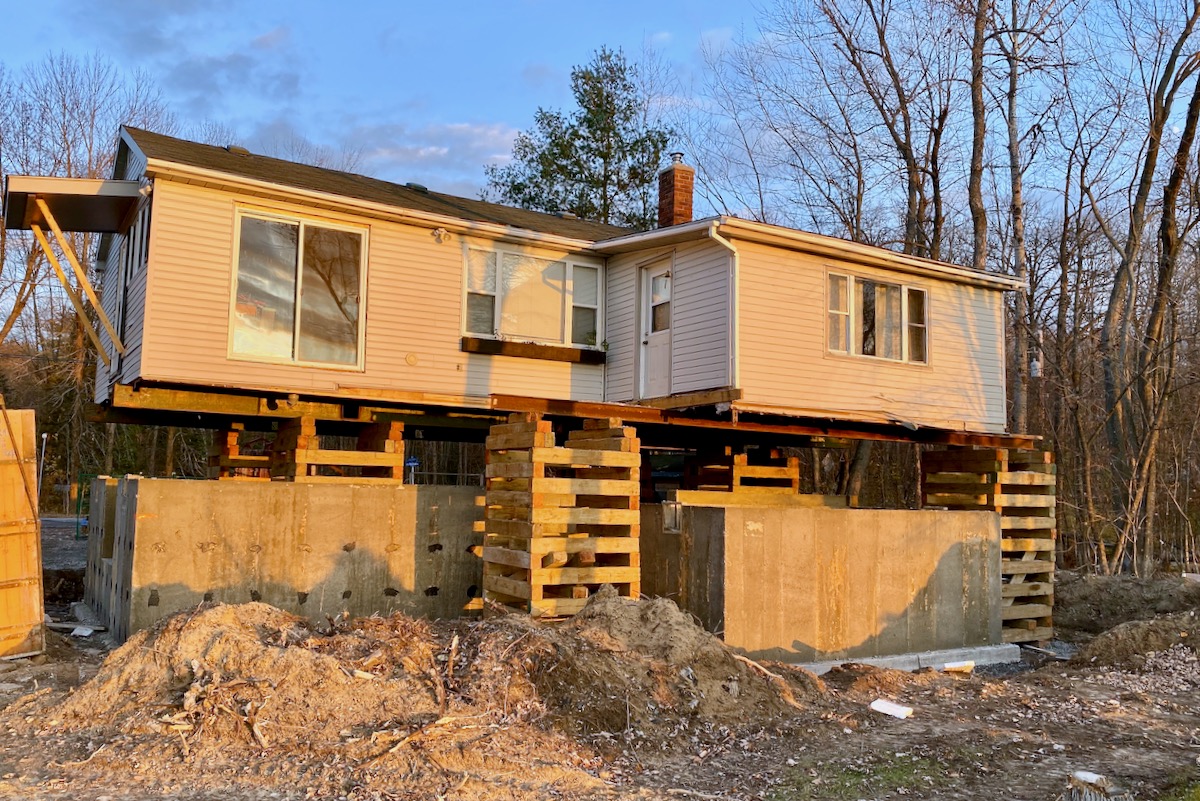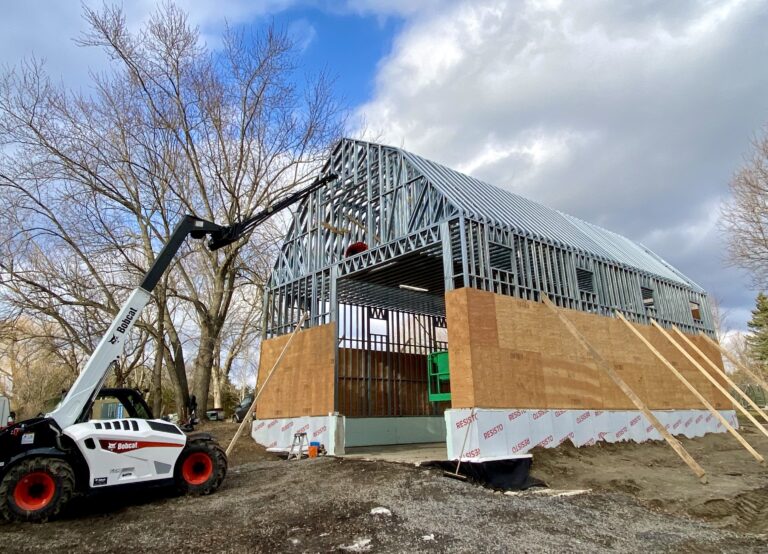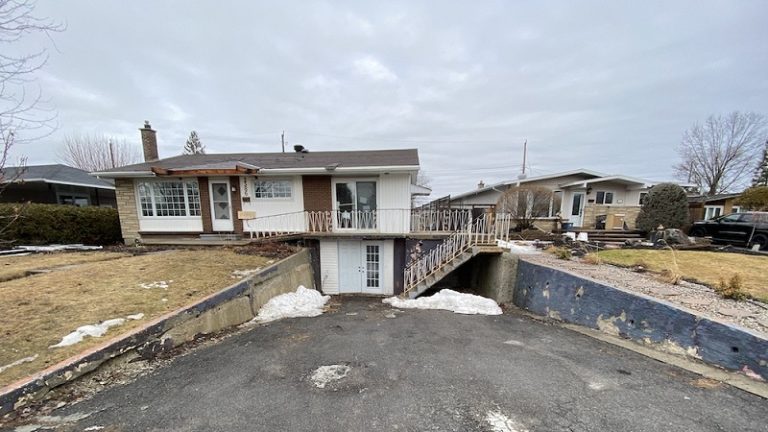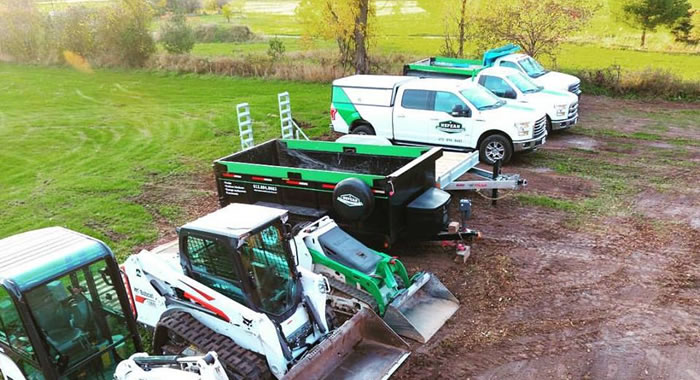Lifting a House for Foundation Replacement in Ottawa
If you’re reading this blog post you’re most likely searching for information on the complexities of, and what’s involved with lifting a house in the Ottawa area.
Maybe you’re lifting your home because you’ve been affected by flooding of the Ottawa river, or you’re looking to prevent it, or because you have significant foundation failure or even because you want a taller basement. Our goal is that this blog post will serve you as general guide of what is typically involved in this type of work.
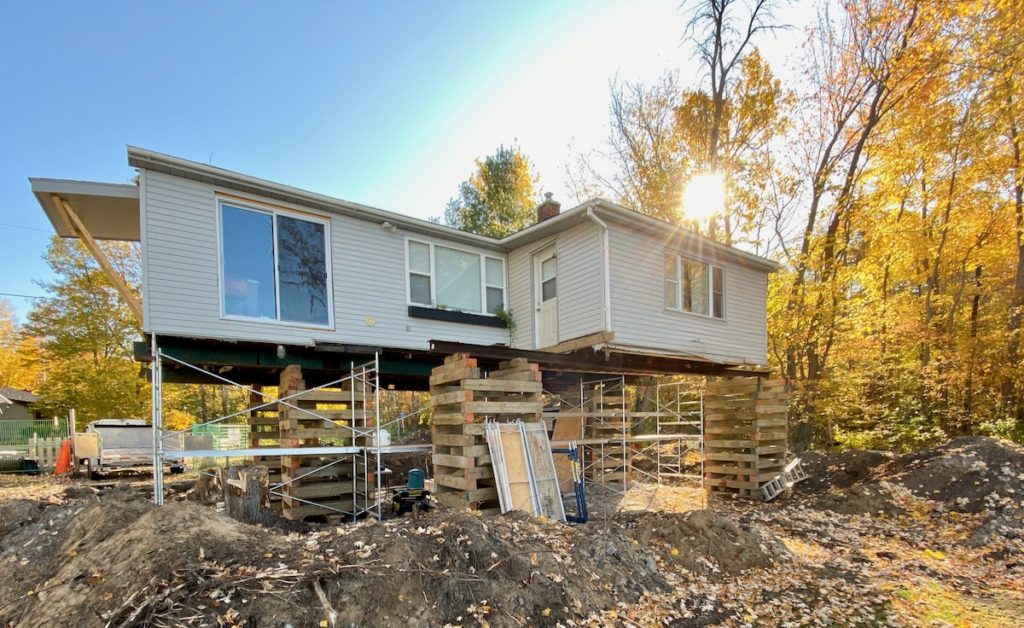
If you’re looking for seasoned experts to help with your house lift project, give us a call or drop us a line, we’re happy to help 613-894-8683
Where to start? Can my house be lifted?
One of the first things to determine in this process is to figure out if your house or structure can and should be lifted.
Anything can be done with enough time and money, but figuring out if you should before you get heavily invested in plans and permitting will save both time, and money.
Okay, so what can be lifted? Typically a traditional wood framed structure, is generally quite straight forward to lift. Each project has its own complexities, but generally, the larger and more complex the house, the more challenging it is to lift. Brick and stone structures can also generally be lifted, however this adds some complexity.
If your house has suffered from structural damage due to rot or shifting, this would need to be assessed in the early stages. If your house is structurally compromised, it could be unsafe or very costly to lift.
1. Hire a local general contractor
An experienced, and knowledgable general contractor is invaluable in the process of lifting. They will save you time, and can prevent some very costly mistakes.
There are many things to take care of in advance of, during, and after the lift.
One of the first, is plans and permits. We can help determine if it even makes sense to lift, or if you’re better off starting over. A frank and open discussion with us will determine your options, and best course of action for your specific project.
Of course it should also be noted that when lifting a house, there is generally more project management required as compared to a new build or renovation. This is simply because of the variables that exist in this type of project. So when choosing your contractor, you want to make sure your contractor is on site regularly, to stay in control of the project.
Once it’s established that lifting your house is the correct course of action, next is planning and permits.
2. Planning for permits in the City of Ottawa
This is by no means a comprehensive list, but for planning purposes projects like this typically involve engineering, surveying, drafting, and co-ordination of various specialty trades.
By working with us, we can help ensure that there is an efficient planning and construction process. We will ensure that construction details and decisions made in planning are code compliant, and are actually feasible. No matter how good the engineers and drafters are, mistakes are possible and things can be designed in a way that’s impossible to build! This is especially true when it comes to dealing with renovations and modifications to existing structures.
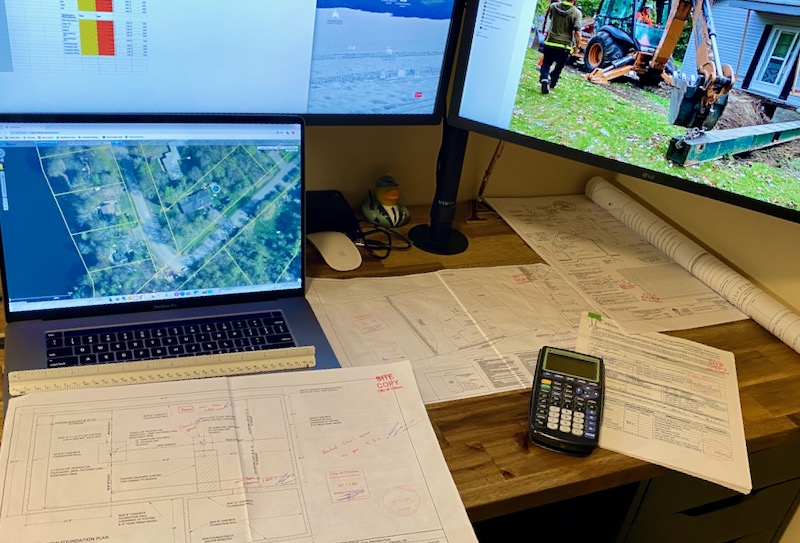
3. Permitting – City of Ottawa and Conservation Authority
In Ottawa, and the surrounding areas, we typically have 2 permitting authorities.
If your property is in a flood plain, permission to do work is required from the local conservation authority. This is not a building permit, but it generally covers permission of altering the grading, surface water flow, and property alterations within the flood plain.
Next would be the building permit – your municipality (City of Ottawa, Carleton Place, Mississippi Mills, Arnprior) administers and ensures building code compliance. Once we’ve got approval from the conservation authority, this permit, along with all your other documents is submitted, and reviewed for compliance. Assuming everything is in order, we are issued a building permit.
4. Confirming Plans
Once the building permit has been issued, the majority of variables have been isolated. Now comes the time to co-ordinate and schedule all the various trades involved.
Foundation elevations and locations need to be confirmed. Lift elevation, and other details pertaining to the lift need to be reviewed.
All of this needs to be taken care of in advance of the lift, and there’s a lot to do.
Again, I’ll highlight the value of a good general contractor. As your GC we have a sizeable rolodex of professional trades we work with, and are able to manage them efficiently. We’ve worked with most of our trades for over 10 years. We also own our heavy equipment and dump trucks to tackle any of the excavation. This, along with our dumpsters, scaffolding and specialty concrete cutting equipment lets us get the prep work done efficiently, and without delays caused by renting equipment, and unnecessary subcontracting.
5. Prep work for lifting a house
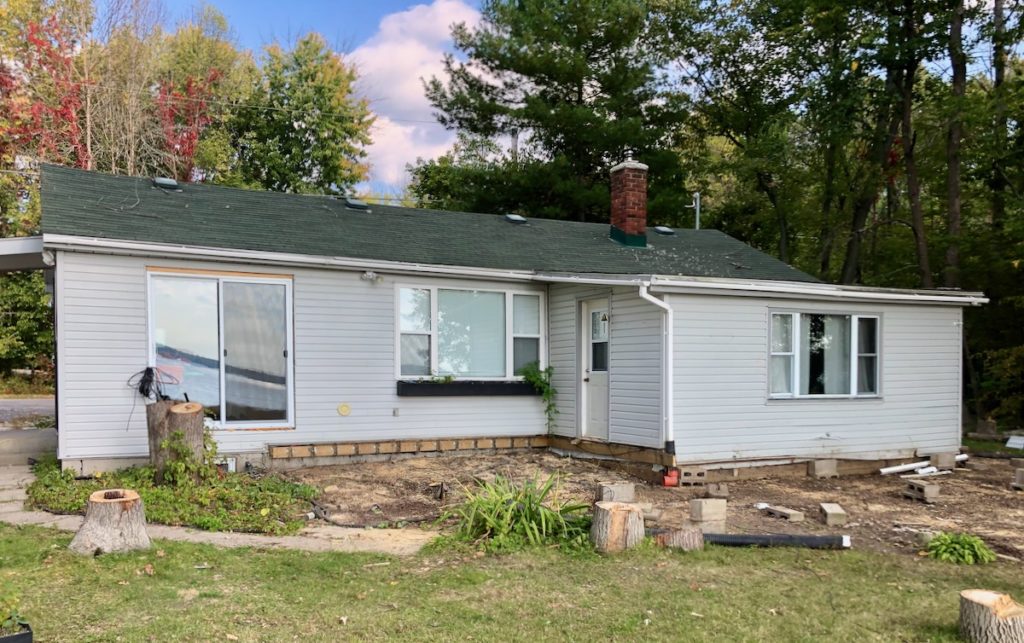
Prior to the lift, all the previously mentioned prep work needs to be done. Any access issues identified in the planning stages will need to be addressed, whether it be removing fences, removing landscaping, decks, stairs, etc. At this time, all the utilities will also be disconnected.
6. Lifting the house
In general terms, most houses are lifted in similar manner. Steel beams are inserted below the floor that is being lifted, and then those beams are lifted with hydraulic jacks resting on wood cribbing. This same cribbing is then used to support the house for the duration of the project.
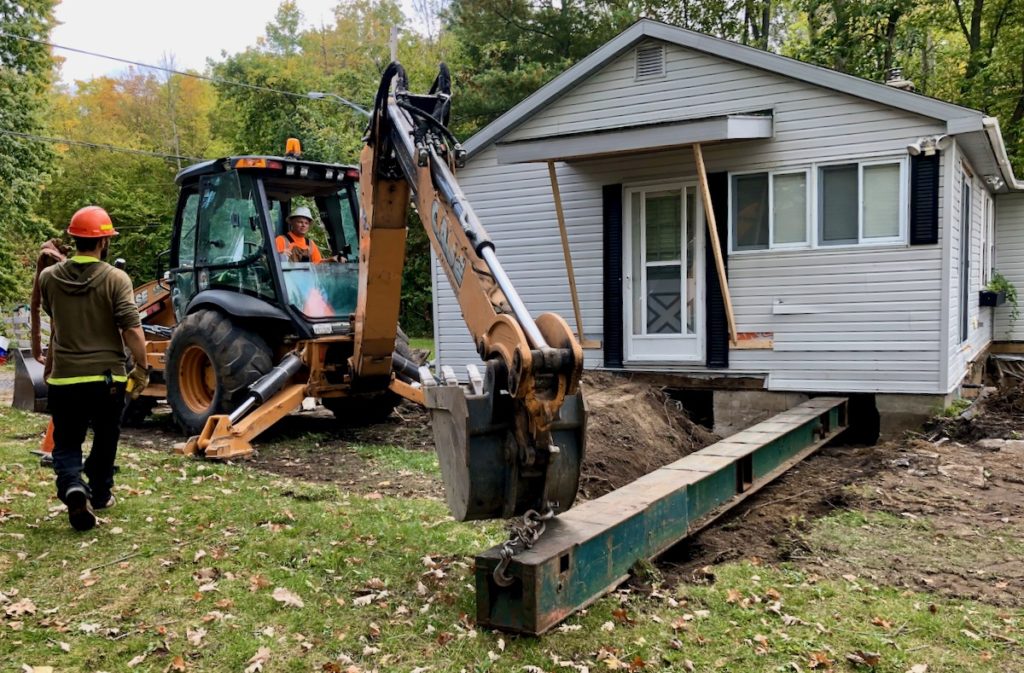
7. Demolition & Excavation
Once the house is out of the way, this would be when any old failed foundation would be removed, and the excavation for new footings and walls would take place.
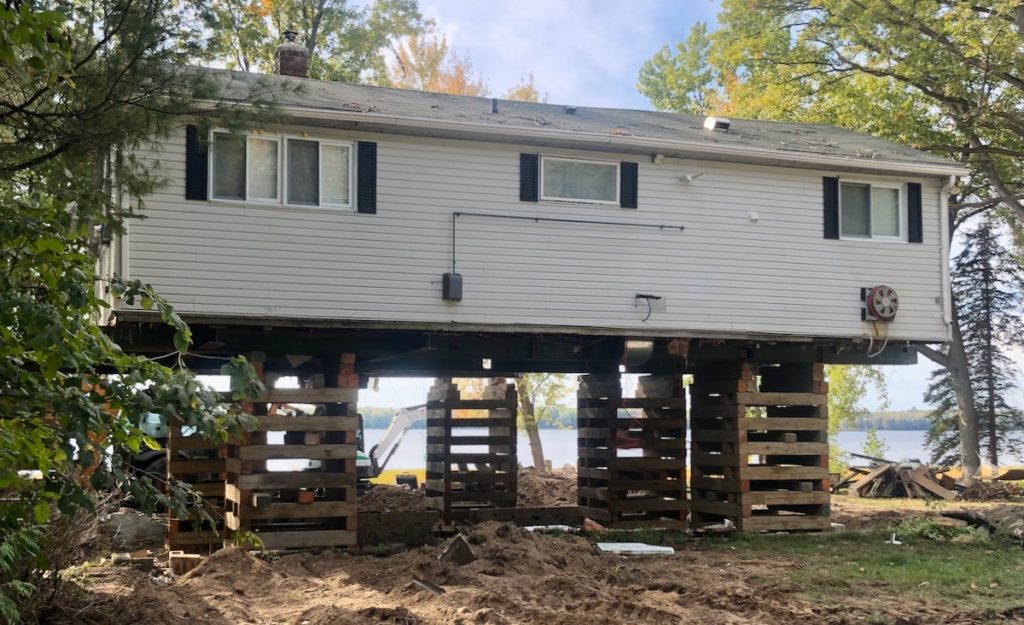
An important note about excavation around lifted houses – access is generally poor, or at least in the traditional sense of excavation. Working with us will ensure you’re working with a company equipped to tackle complex excavation and demolition in tight spaces.
8. Foundations in the Ottawa Area
There are generally two main types of foundations built for house lift projects in the Ottawa area. The type used will depend on several factors, such as site conditions, loads, budget, and potential for flooding.
Pier & Beam – This is a series of piers, or columns, that are dug below the frost line. These columns then support beams running under the house. This is generally quite cost effective, but in our climate can present some challenges with respect to mechanicals, and insulation.
Basement or Crawlspace – This type of foundation is very typical in the Ottawa area. The footings are generally excavated and poured below the frost line, and then concrete walls are poured on top. This creates a very durable sealed and conditioned space under the house, makes it easy to run mechanicals, and has the potential to be used as storage.
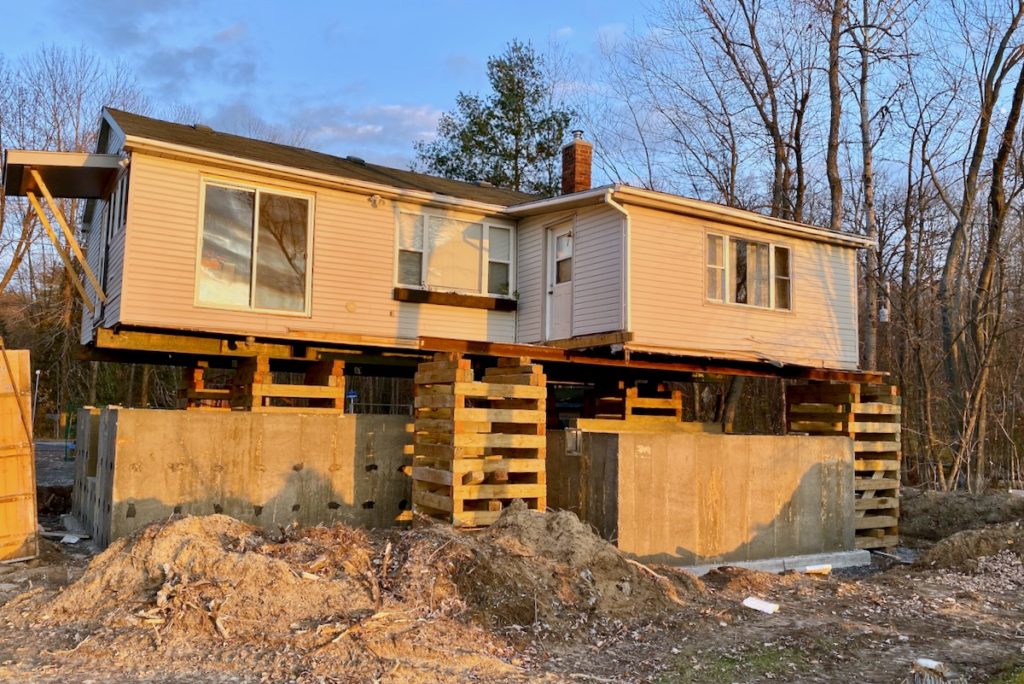
9. Lowering & Finishing
Once the new foundation is under your house, the lowering can begin. Lowering the house is simply the reverse of the lifting process. Hydraulic jacks are used to lower the house, and cribbing and beams are removed.
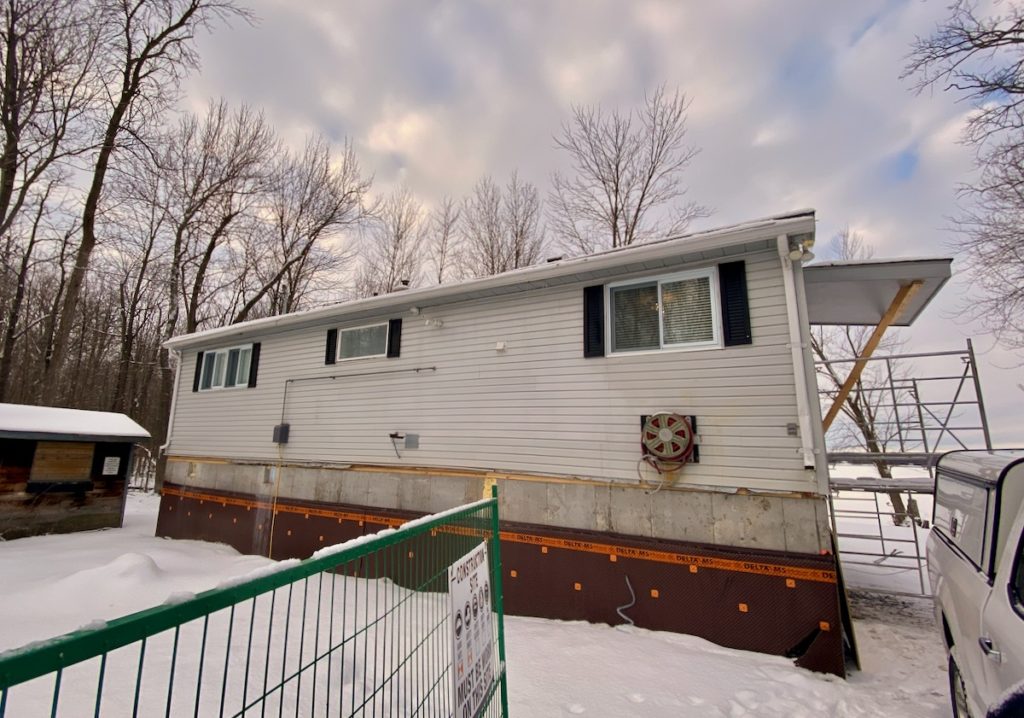
Once the house is down on the foundation, any foundation waterproofing and weeping tile can be done, also any mechanicals, plumbing, and electrical that was removed can now be reinstalled. Any further work required for the project can also be done. Once any necessary inspections are conducted, utilities will be reconnected.
At this point, new decks, stairs, driveways, landscaping, etc would also be constructed to give you access to your newly lifted home.
After that, all that’s left is for you to move back in, and enjoy your newly lifted house.
